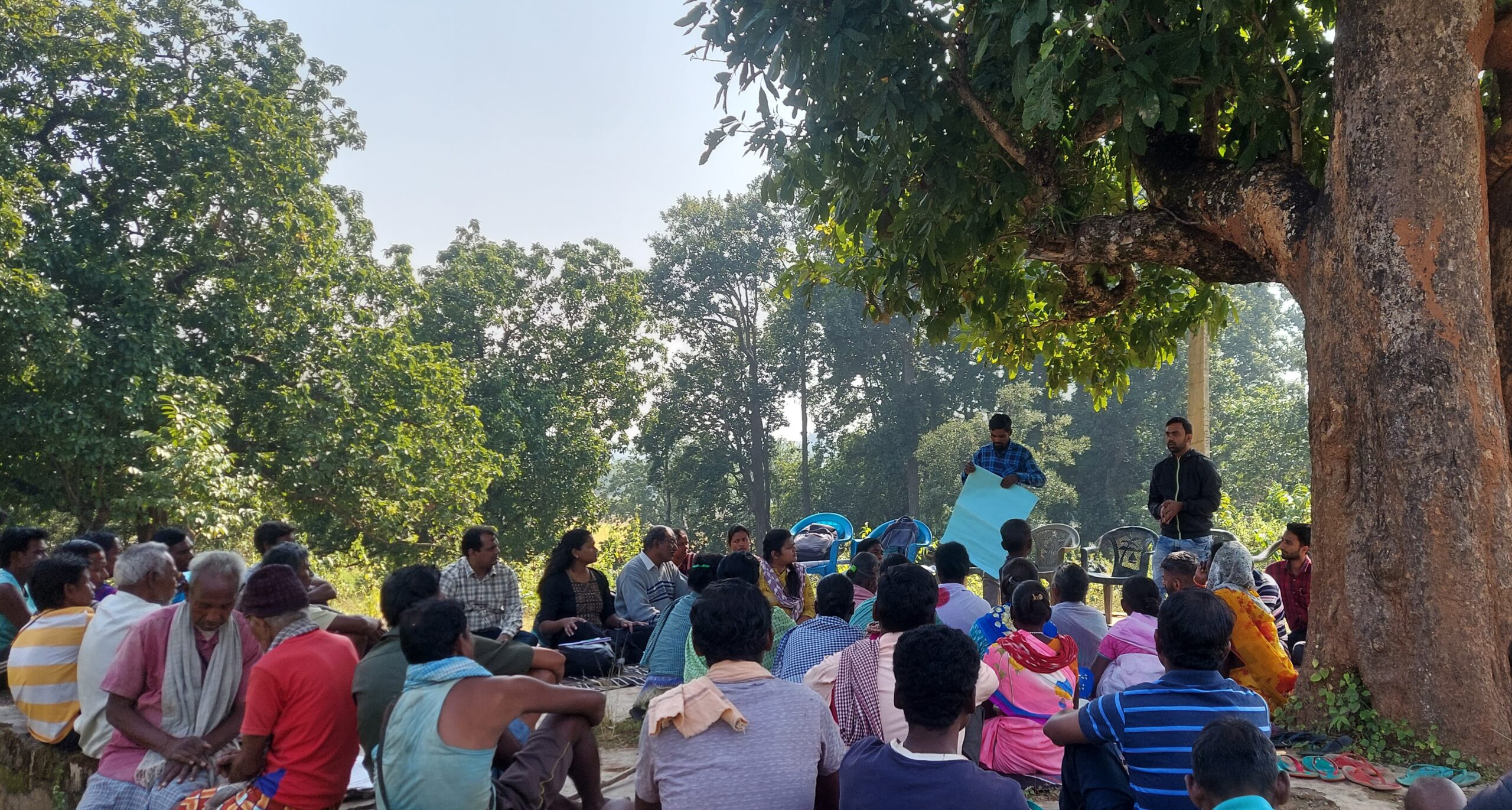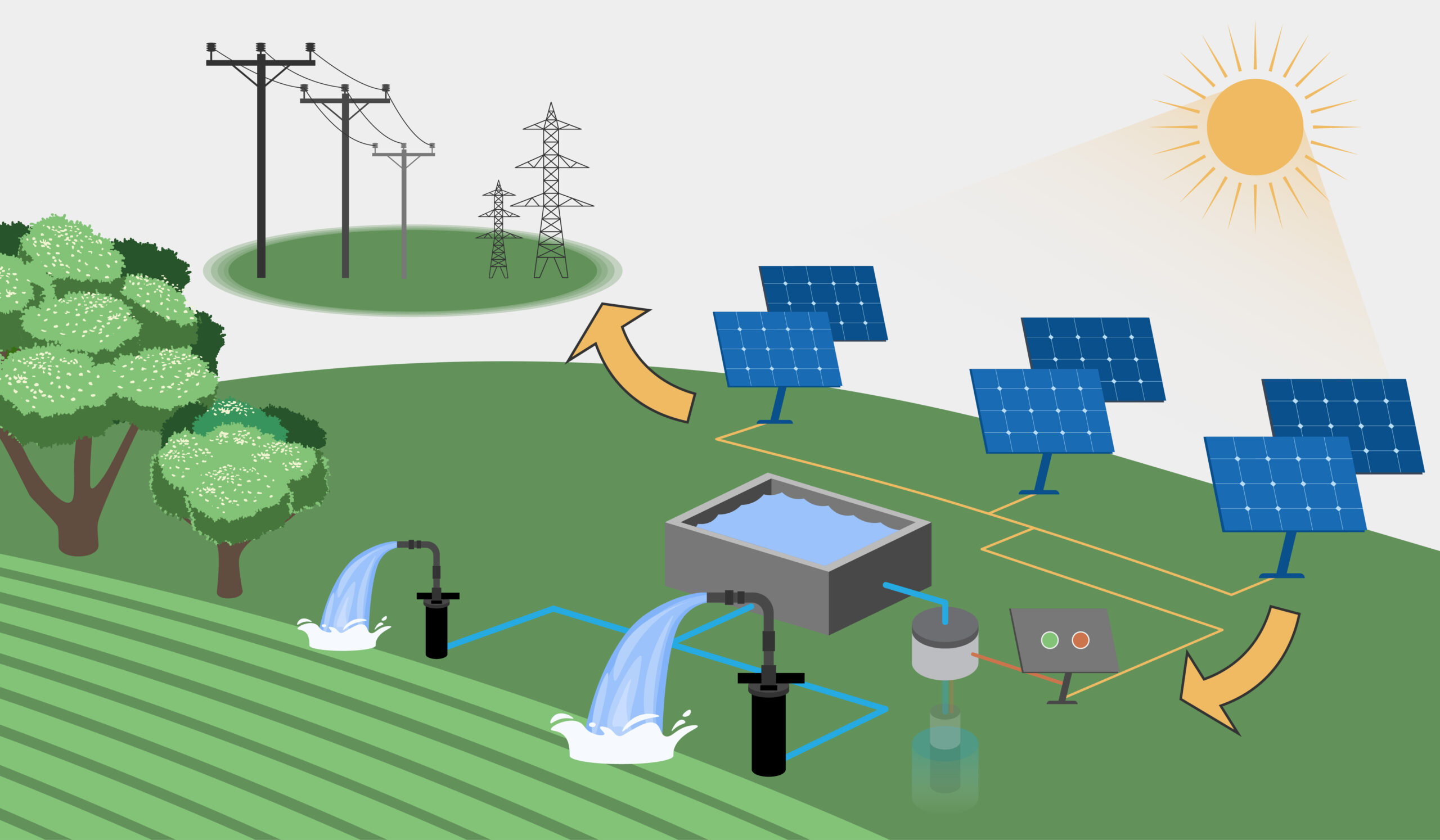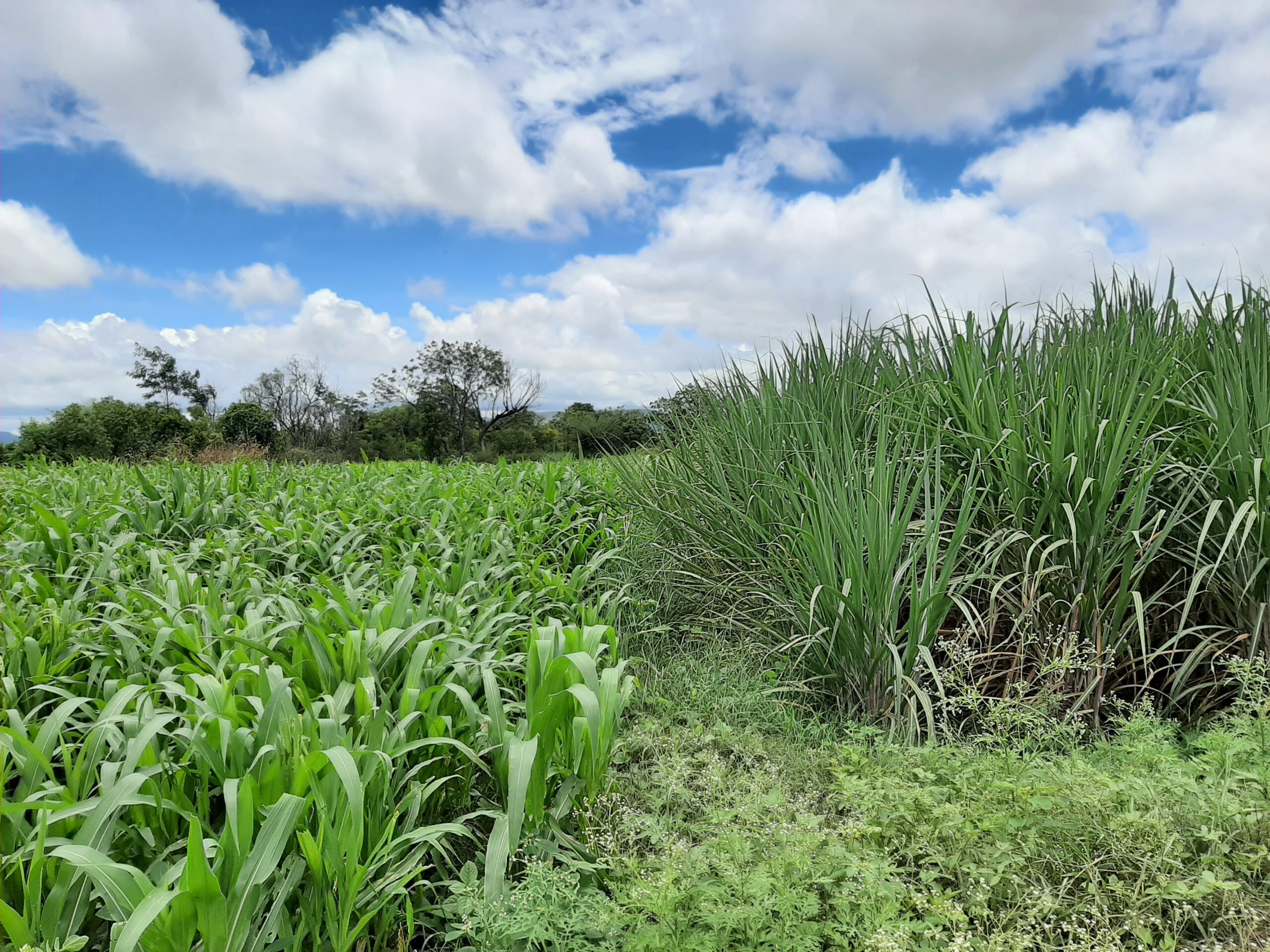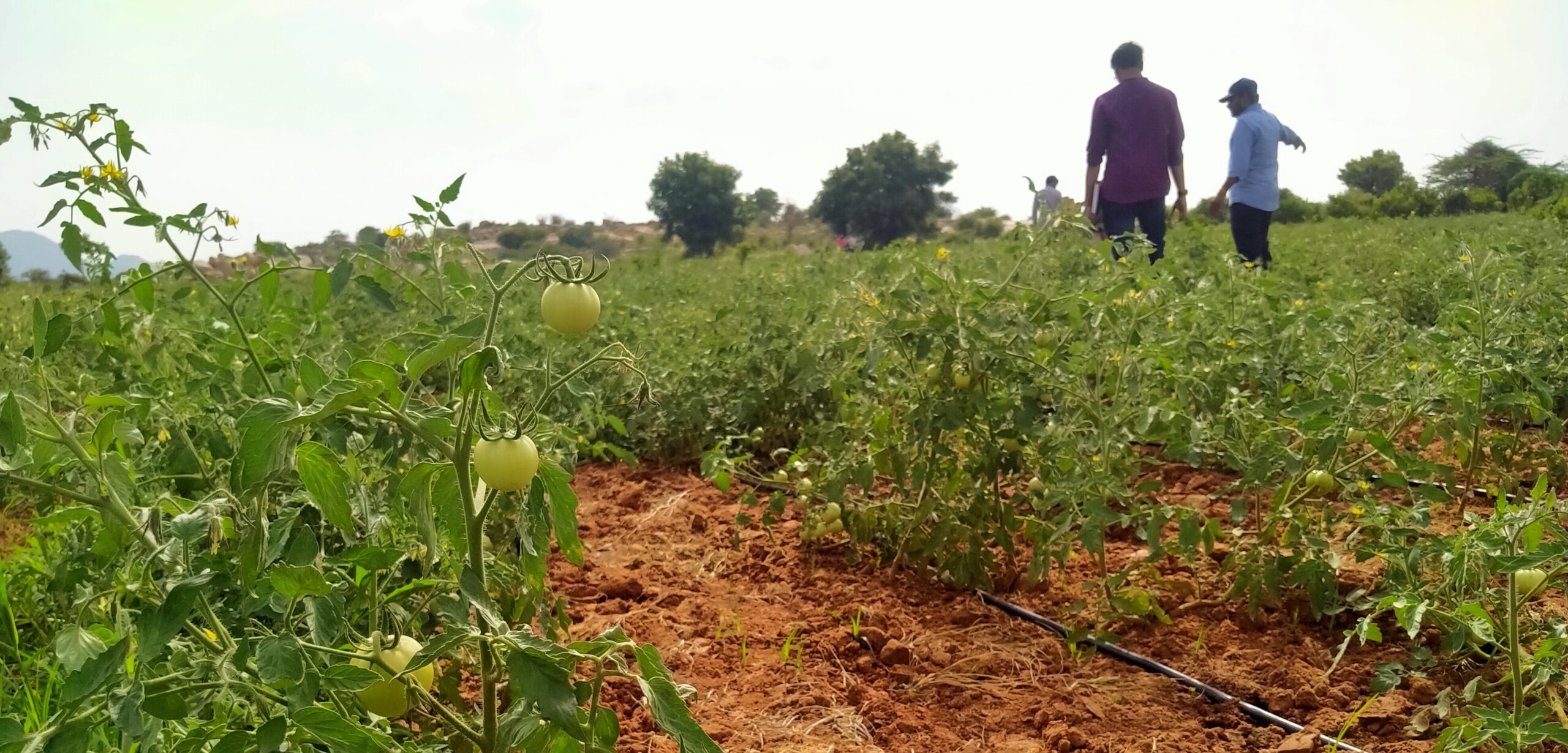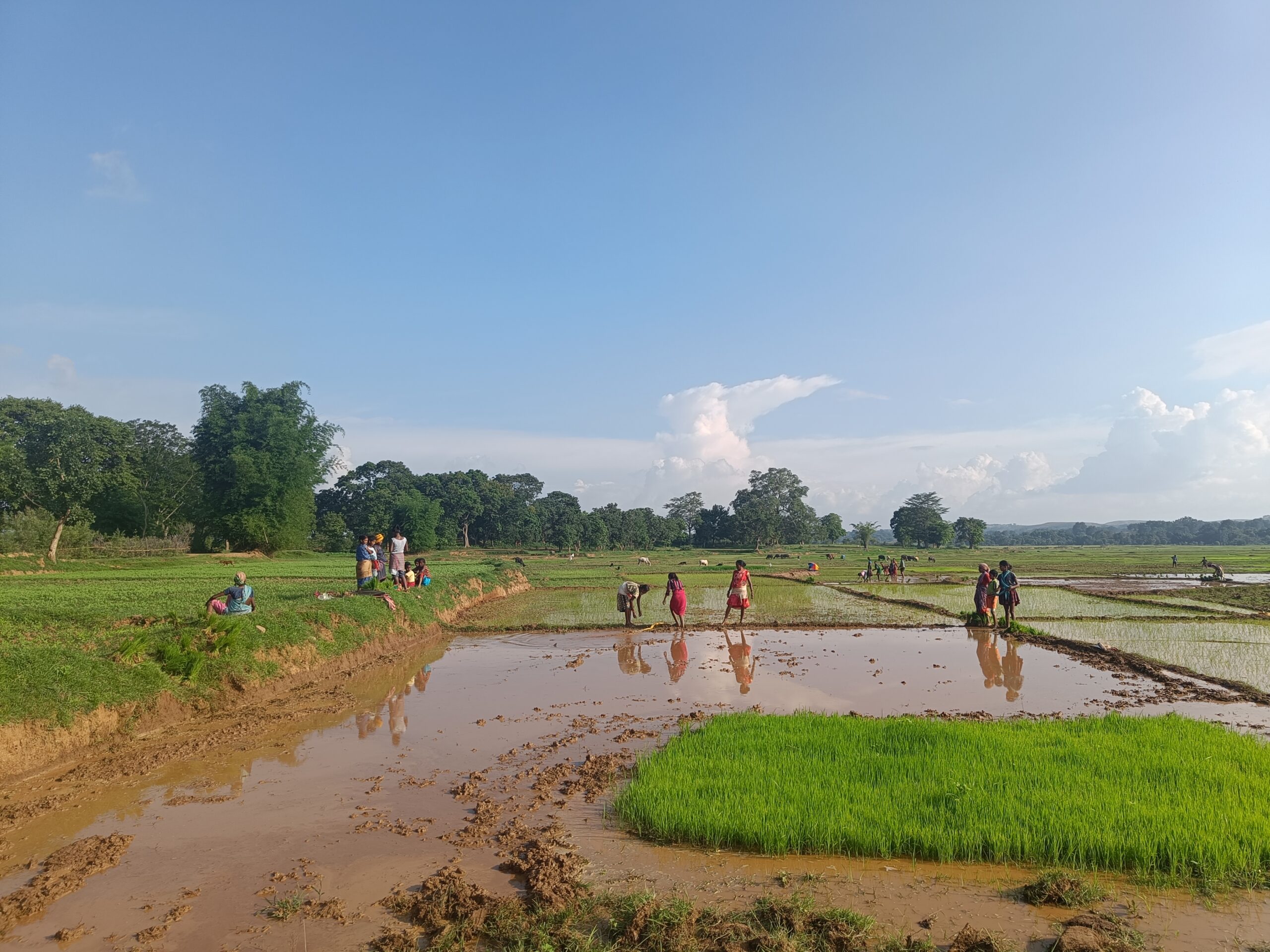‘A Gamble like the Stock Market’ in India’s Onion Belt
Tulshiram Karkande’s farm in Wadzire, Maharashtra, where he is experimenting with four different varieties of onion. Photo by Srushti Paranjpe
‘Now this is my comparative study,’ said Tulshiram Karkande, surveying his onion field spanning six acres in Wadzire village in Ahmednagar, Maharashtra. He had divided this land into four plots to experiment with four varieties of onion crop, all acquired from different sources. ‘The result would show which one gives the best yield, and thus should be sown next time’, he told us.
This is one way onion farmers of Ahmednagar are learning to adapt to uncertainties spurred by erratic rainfall and the market. There’s demand throughout the year for this ubiquitous vegetable, the price of which fluctuates wildly. But what’s happening at the producer end of this all-important supply chain? Here’s the story of how a farmer in Ahmednagar experiments with seeds, carries out cultivation and perceives risks related to storage, markets and switching to organic.
We were introduced to Tulshiram by the CEO of a Farmer Producer Organisation (FPO) in Wadzire, who described onion as the major crop in the Parner block of Ahmednagar district. Ahmednagar’s north-western neighbour, Nashik, is famous for its onion production and is where the biggest onion market in Asia, Lasalgaon, is located. Maharashtra is the country’s largest producer of onions.
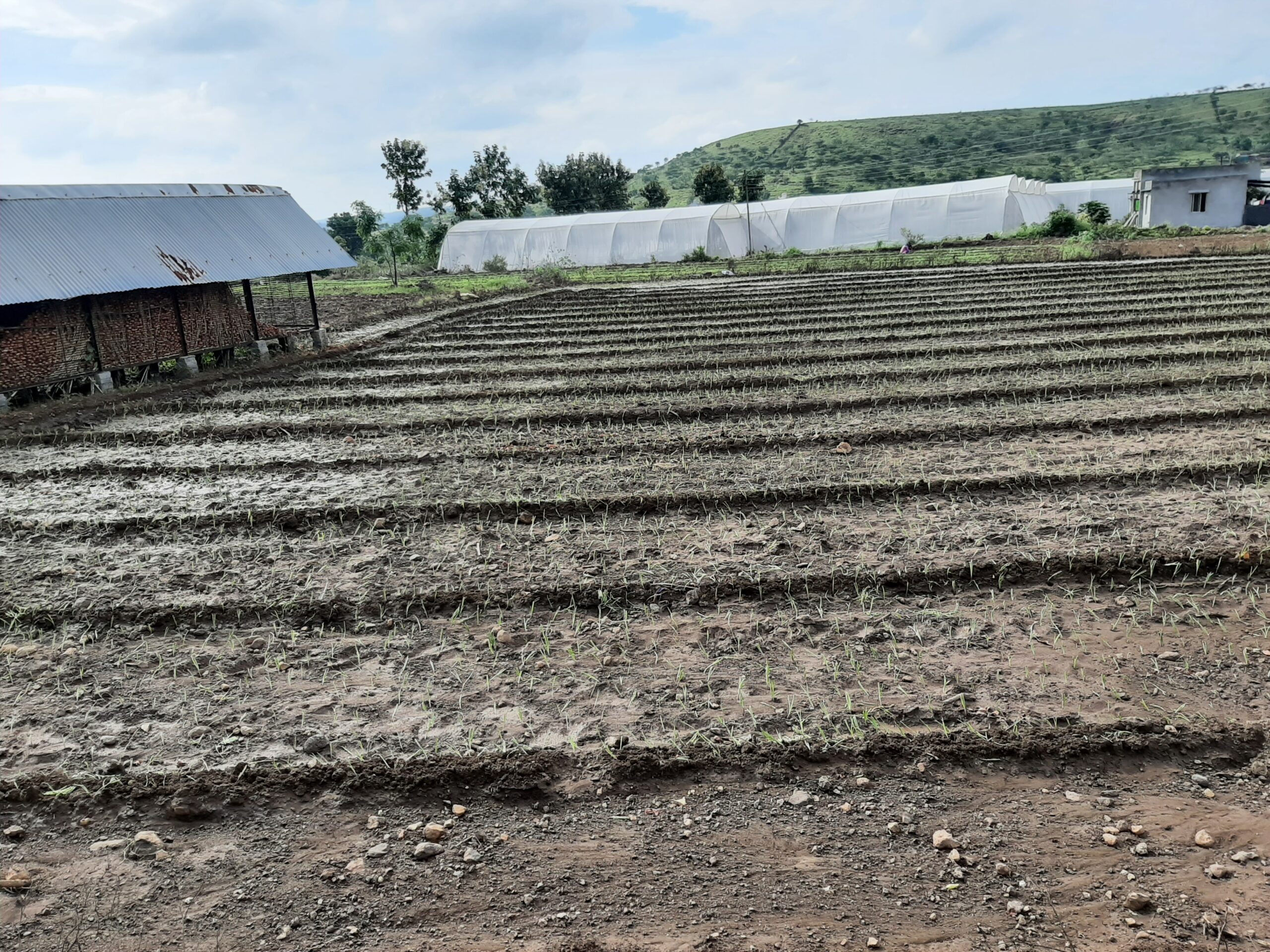
Transplanted onion saplings in a farm in Wadzire. Photo by Mukta Deodhar, Srushti Paranjpe
Seasons and varieties
Tulshiram Kaka, as we called him, invited us to visit his farm and agreed to answer our questions. He was one of the first farmers in the village to start sowing onions in Kharif (crops grown in the monsoon season, from June to November), over 20 years ago.
He said that onion was grown only during the Rabi season (winter crops, from November to April) in his village about 35–40 years ago, while the Kharif season’s onion cultivation was more common in Nashik, about 25 kilometres away. But over the last 10 years, most of the farmers from Tulshiram’s village have also taken up this practice. ‘It generally fetches decent money,’ he said.
Read | Field Notes: Farmers Dump Tomatoes Despite Having Asia’s Largest Tomato Mandi in the Next District
He explained that of the four varieties he had planted for this year’s Kharif season, two were obtained from a fellow farmer last year, one batch comprised of seeds selected from the previous (Rabi) season’s harvest (seeds for which came from another farmer) and the remaining part was sown with Lucifer variety seeds from a private company called Kalash.
For the Rabi season, he plans to buy seeds from other farmers, like those from Sangamner plateau in the same district, who have developed selective breeding varieties. These are good as they last longer in storage and are less vulnerable to pests and environmental conditions. These newer more-resilient varieties are not only being developed by farmers, but also agricultural universities. However, Tulshiram described them as ‘lagging behind the farmers’ in terms of such innovations.
He told us that among the available varieties, he rates Poona-Fursungi the best, while he finds Pusa Red, developed 25 years ago, ‘only satisfactory’.
Onion’s water needs
The crop’s relationship with water is fragile. For instance, one of the steps of the onion farming cycle is transplantation of the saplings, like rice, but this is contingent on the soil being moist. In a region like Wadzire where the ground is more dry and gravelly, unlike Nashik, farmers have to wait until it rains to be able to carry out this step.
The crop’s rainfed Kharif cycle lasts 90 days. Excess rain at any point in this cycle is harmful and can cause as many as half the seeds to spoil. In 2020’s Kharif season, Tulshiram said that sowing was done thrice between 15 July and 15 September, yet the onions did not survive due to intense spells of rainfall.
For a successful Rabi cycle, which spans 120 days and requires regular irrigation before harvest, good monsoon rain is essential. This schedule has to be carefully followed so that harvest can be completed by the end of February — before water levels in wells reach their lowest point. In case of below-average monsoon rainfall, farmers adapt by reducing the acreage under onion cultivation and sow more millets and pulses instead, which are less water-intensive, for the upcoming Rabi season.
The storage gamble
By the time Rabi ends, and the onion harvest reaches markets in March, the price of the crop dips. This is where the risks associated with storage come up, called Chaalitla Kanda in Marathi.
As Tulshiram Kaka described it — ‘it’s a gamble like the stock market’.
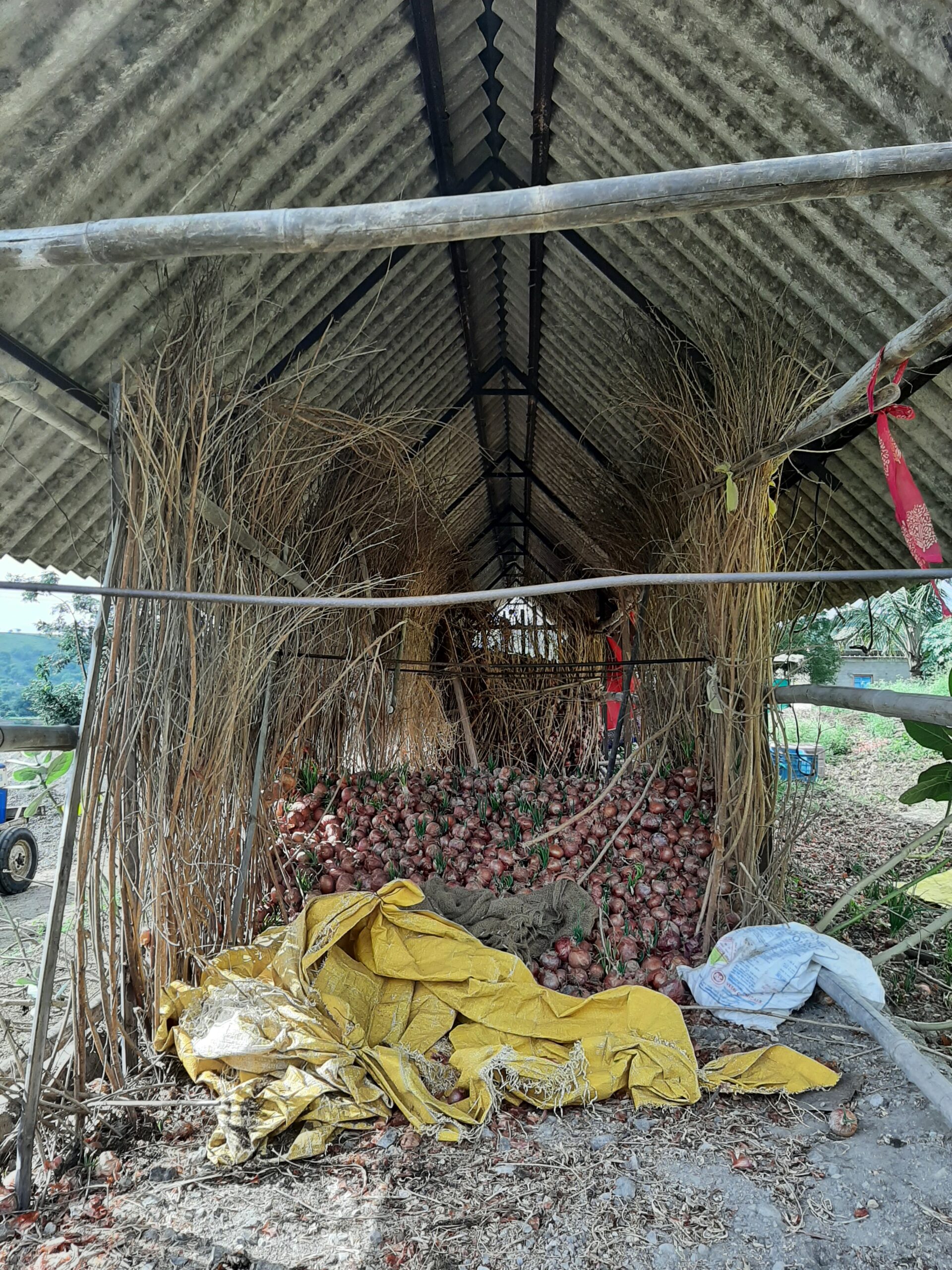
Onions sprouting in a storage shed in Wadzire, to be discarded soon. Photo by Mukta Deodhar, Srushti Paranjpe
Farmers prefer to store the crop when the price falls in March, but only those who can afford it are able to store it through the summer months and wait to sell their produce in the rainy season (from June) when the market rates usually pick up. But even if farmers have access to storage facilities, it is still a difficult stage of the farming process, vulnerable to many risk factors.
‘Extra labour is required for the activity, the farmer’s capital is stuck for a few months, onions can get spoiled in case of good first rains or high humidity. And the biggest of all — there is no guarantee that the prices will improve later.
Only wealthier farmers can take this risk,’ said Tulshiram Kaka, who has himself seen his harvest rot about four or five times.
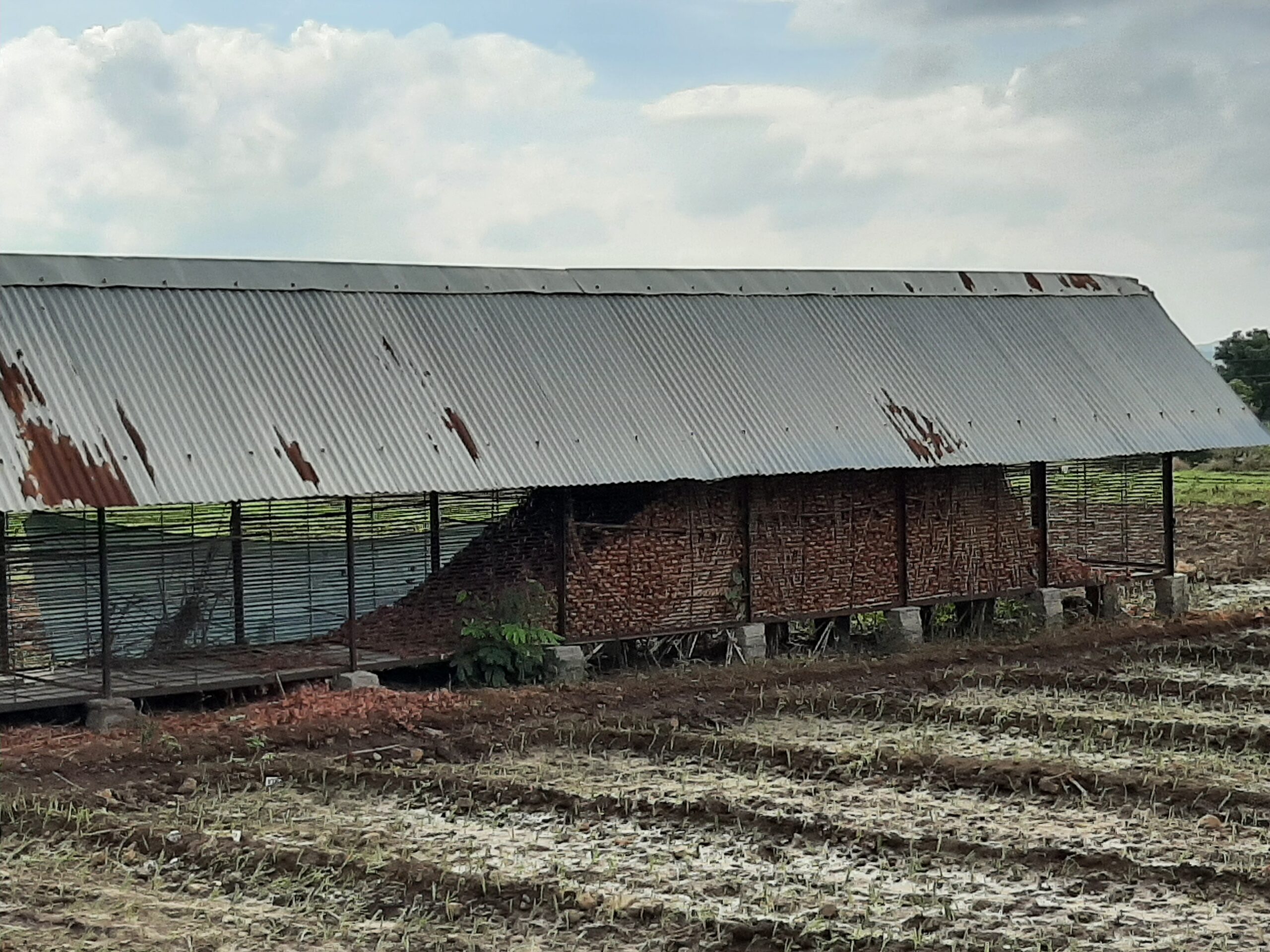
An onion storage structure in Wadzire. Photo by Mukta Deodhar and Srushti Paranjpe
Bringing our attention to the yellowing tips of the stalks, Tulshiram Kaka said that he had to spray a strong fungicide, Nativo, which is otherwise used on grapes.
He used to spray half a box of less potent pesticide only once during the crop cycle, but now the saplings need three to four sprays (from the seedling stage to pre-harvest) and harvested onions need five to six sprays. Compared to fungus, he said that insects are less of an issue and can be controlled with neem oil.
We asked him about organic farming, but he seemed sceptical about its results: ‘If one goes organic, according to my estimation, an onion won’t grow bigger than an arecanut.’
Tulshiram Kaka reiterated his concerns by explaining how much it costs to procure seeds: ‘About 15 kg seeds are sown in these six acres, which is roughly 5.5 paylee (a form of measurement used locally). The price per paylee is ₹10,000–11,000. People blame farmers for using too many chemicals. But if we don’t use them, what will happen to my ₹55,000 worth of seeds?’
He sells his onions at the bustling Parner market — second in size and activity only to Nashik’s Lasalgaon market. Some of the buyers here are exporters. He believes that the Agricultural Produce Market Committee (APMCs), government-run markets created to safeguard the interests of farmers, has helped Maharashtra’s farmers survive; ‘they ensure that no one loses a single rupee’.
While markets can be unpredictable, Tulshiram has discerned one interesting factor that determines rate of produce — rainfall in the Nashik belt, Ahmednagar’s more prosperous neighbour and onion hotspot.
If Nashik receives heavy rains during Kharif (causing a bulk of the crop to rot) while Ahmednagar does not, it is good news for the farmers from Ahmednagar as their onions then fetch a much better price of up to ₹100–₹200/kg, Tulshiram explained to us.
With a wide range of risk factors such as increasingly uncertain rainfall patterns, frequent fungal attacks, market fluctuations and uncertainties, onion farmers are more often in a lose-lose situation than not. While we were out on the field, we saw onions sprouting in the storage structures (image at the beginning of this post), a painful sight as it shows that the harvest farmers toiled so hard for and invested so much in, had to be wasted.
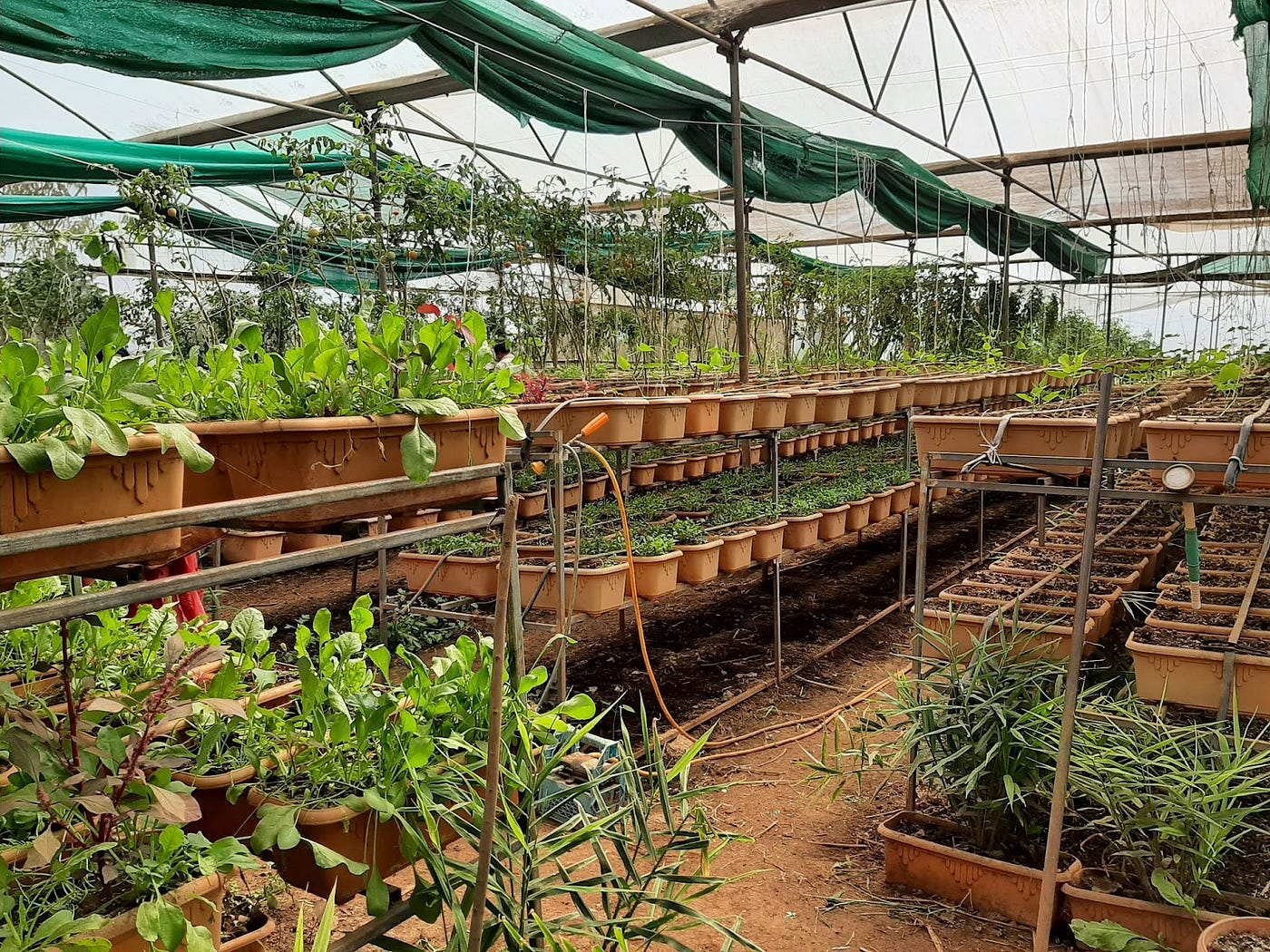
Vertical farming in a polyhouse. Photo by Srushti Paranjpe and Mukta Deodhar
The potential of farmers’ collectives, infrastructure
There is an urgent need to ensure that harvest and post-harvest losses are reduced and that onion farmers’ efforts yield a good price. One possible alternative to significantly reduce crop losses to extreme weather — one of the biggest causes of concern — is controlled farming inside a polyhouse (image above). Dnyaneshwar Bodke, the founder of the Pune-based collective called Abhinav Farmers Club, told us that polyhouse farming secures his crop during extreme weather events while many others lose theirs.
Making raised beds (to divert water from excess rainfall and also to reduce moisture loss) and protective irrigation (in case of delay in/ low rainfall) are other tangible fixes that have the potential to mitigate crop loss due to adverse weather conditions.
This Firstpost article raises a number of other important measures that prompted us to think about ways forward. FPOs and other collectives like AFC, along with agri-tech start-ups, can facilitate access to cold-storage facilities, which will help keep the price of onions stable throughout the year. FPOs and agri-tech start-ups can also help farmers reach global markets; this has a higher chance of fetching a good price for their produce.
For us, it was heartening to hear the Wadzire FPO’s CEO ambitiously say that he is taking help from his contacts in NGOs and agri-tech companies to transition from ‘walking to running’ — by directly selling to malls in Pune. The FPO’s efforts to bulk-sell the onion and consistently fetch a decent price for the produce offers a ray of hope. As the article rightly suggests, an enabling environment has the potential to transform FPOs into the Amul of agri-produce.
Credits
The authors began this work when they were with the Centre for Social and Environmental Innovation at the Ashoka Trust for Research in Ecology and the Environment (CSEI-ATREE). WELL Labs is now taking it forward in collaboration with ATREE.
This fieldwork was part of a project, funded by the Rainmatter Foundation, spanning Maharashtra, Karnataka, Andhra Pradesh and Telangana. Through a number of interviews and site visits, we documented interventions carried out by civil society organisations (CSO) to address problems in agriculture related to degraded land, depleting water and falling farmer incomes.
Edited by Kaavya Kumar
If you would like to collaborate with us outside of this project or position, write to us. We would love to hear from you.
Follow us and stay updated about our work:


